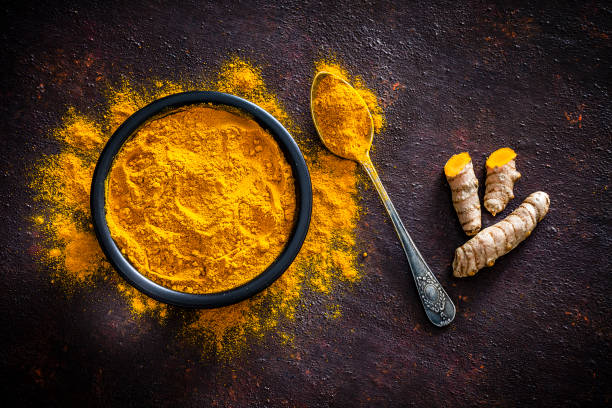Turmeric Uses in Cooking
Explore the versatile uses of turmeric in cooking. Add natural flavor, vibrant color, and health benefits to your dishes with this powerful, golden spice. Here are some of its primary uses:
- Curries and Stews: Turmeric is a key ingredient in many curry powders and pastes, adding a warm, earthy flavor and vibrant yellow color to dishes.
- Rice Dishes: Adding a pinch of turmeric to rice can give it a golden color and a subtle flavor. It’s often used in pilafs and biryanis.
- Soups and Broths: Turmeric can be used to enhance the flavor and color of soups and broths, adding a warm, peppery taste.
- Marinades and Rubs: It’s a common ingredient in marinades and spice rubs for meats and vegetables, providing flavor and a natural yellow hue.
- Baked Goods: Turmeric can be used in small amounts in bread, cakes, and muffins to add color and a hint of flavor.
- Vegetable Dishes: It’s often used in vegetable stir-fries, sautéed greens, and roasted vegetables for added depth of flavor and color.
- Tea and Lattes: Turmeric is used to make turmeric tea or “golden milk,” a soothing beverage often combined with milk, honey, and other spices like cinnamon and ginger.
- Pickles and Chutneys: Turmeric is used in pickling brines and chutneys, contributing to both flavor and preservation.
- Smoothies and Juices: A small amount of turmeric can be added to smoothies and juices for a health boost and vibrant color.
- Condiments: Turmeric is an ingredient in various condiments like mustard, adding both color and flavor.
Discover why turmeric is a must-have in your kitchen. Enhance flavor, add vibrant color, and enjoy numerous health benefits.Using turmeric in cooking not only enhances the flavor and appearance of dishes but also offers significant health benefits due to its anti-inflammatory and antioxidant properties.

Turmeric vs. Food Additives
1. Nature:
- Turmeric: A natural spice derived from the root of the Curcuma longa plant, used for centuries in cooking and traditional medicine.
- Food Chemicals: Synthetic substances manufactured to preserve, enhance, or add specific characteristics to food.
2. Purpose:
- Turmeric: Adds natural flavor, color, and health benefits to food. Used traditionally for its anti-inflammatory and antioxidant properties.
- Food Chemicals: Serve various purposes like preserving food, enhancing flavor, maintaining color consistency, and improving texture. Examples include preservatives (e.g., sodium benzoate), flavor enhancers (e.g., monosodium glutamate), and artificial colorings (e.g., tartrazine).
3. Health Impact:
- Turmeric: Generally considered beneficial for health due to its curcumin content, which has anti-inflammatory and antioxidant effects.
- Food Chemicals: Can have varying health impacts. While many are deemed safe by regulatory bodies, some chemicals may cause adverse reactions in sensitive individuals or have potential long-term health effects.
4. Usage:
- Turmeric: Used in traditional recipes, curries, teas, and as a natural coloring agent.
- Food Chemicals: Widely used in processed foods to ensure shelf life, taste, and appearance. Common in packaged snacks, beverages, and ready-to-eat meals.
There are additional benefits of eating raw turmeric than over cooked turmeric.
Conclusion:
Turmeric offers a natural way to enhance flavor, color, and health benefits in cooking. In contrast, food chemicals provide consistency, preservation, and enhancement in processed foods but may come with potential health considerations. Using turmeric aligns with a more natural, health-conscious approach to consumer.
Leave a Reply